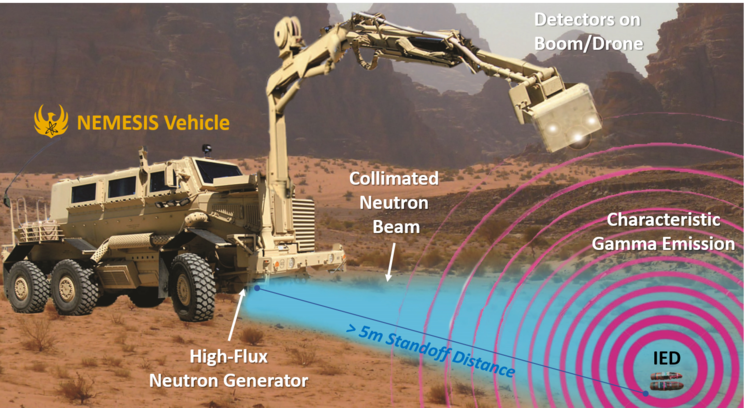Back

One of the greatest threats to troops in the field today are improvised explosive devices (IEDs). Most methods currently used to protect against these devices rely on mechanical or directed energy detonation. The US armed forces have expressed a strong interest in technologies that can detect these devices ahead of a moving convoy and alert troops of their location. A functional solution must be portable, reliable and extremely sensitive at a large standoff distance.
portable, powerful, and reliable
<img src="https://static1.squarespace.com/static/59690f04914e6bf3a66e2712/t/59efb681e9bfdfb6e402c813/1508882164199/JMClogo.JPG" alt="Case Study: Explosives Detection - Phoenix has partnered with the US Army to develop a compact, high yield neutron source for the detection of improvised explosive devices (IEDs)." />
Case Study: Explosives Detection
Phoenix has partnered with the US Army to develop a compact, high yield neutron source for the detection of improvised explosive devices (IEDs).
Learn More
The Phoenix mobile neutron generator can be placed on an autonomous vehicle platform at the head of the convoy. The generator will emit a directed neutron beam ahead of the vehicle. When the neutron beam interacts with a hidden IED, the explosive materials in the IED emit characteristic radiation signatures that are detected either by the lead vehicle or by a remote sensor.
Neutron-based explosive detection technologies have been fielded in the past. However, due to relatively weak neutron source strength, detection standoff distance has been limited to less than one meter. Because the Phoenix neutron source generates more than 1,000 times more neutrons than other off-the-shelf technologies, it is capable of detecting explosives rapidly from much greater standoff distances (greater than 20 m). This explosives detection system has the potential to save thousands of lives of both warfighters and civilians every year.